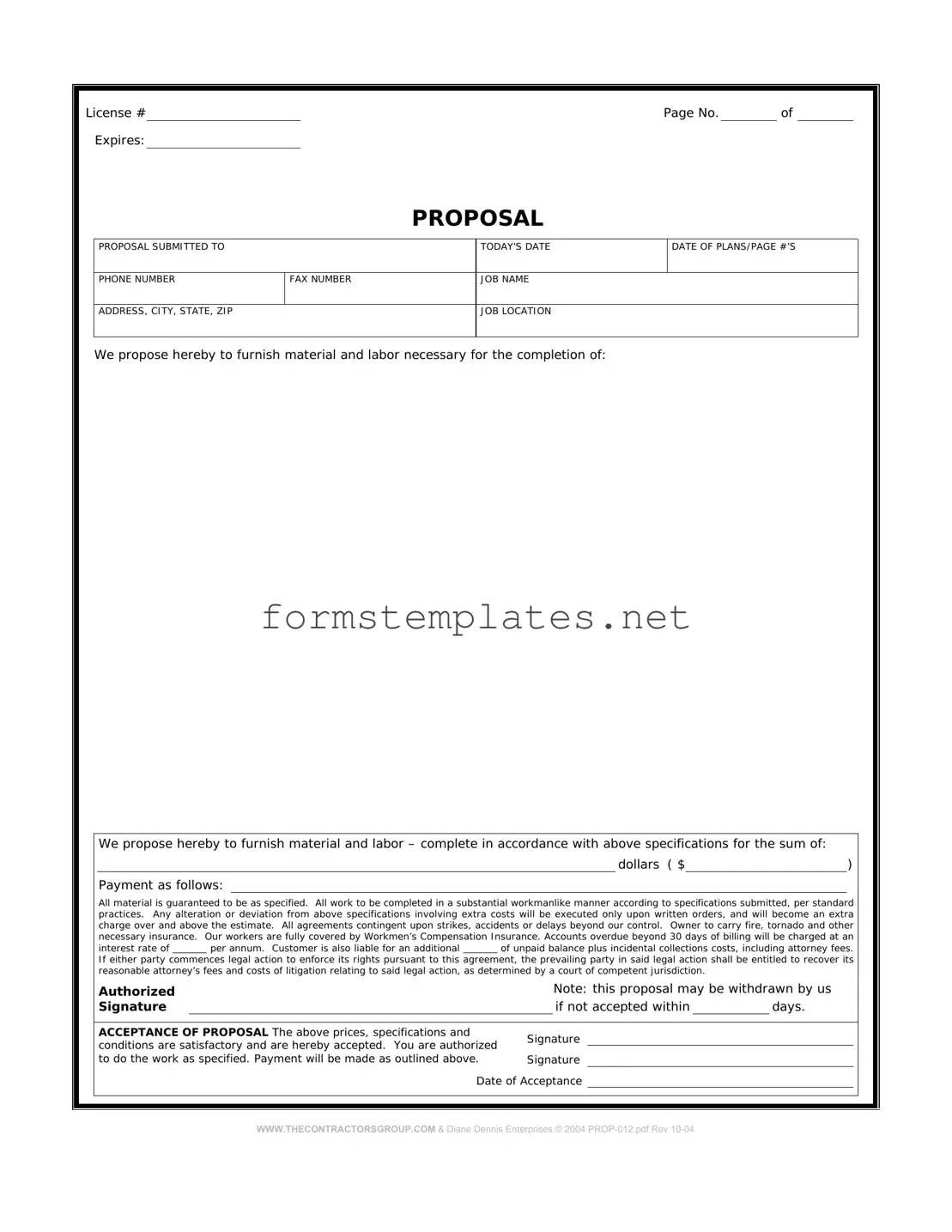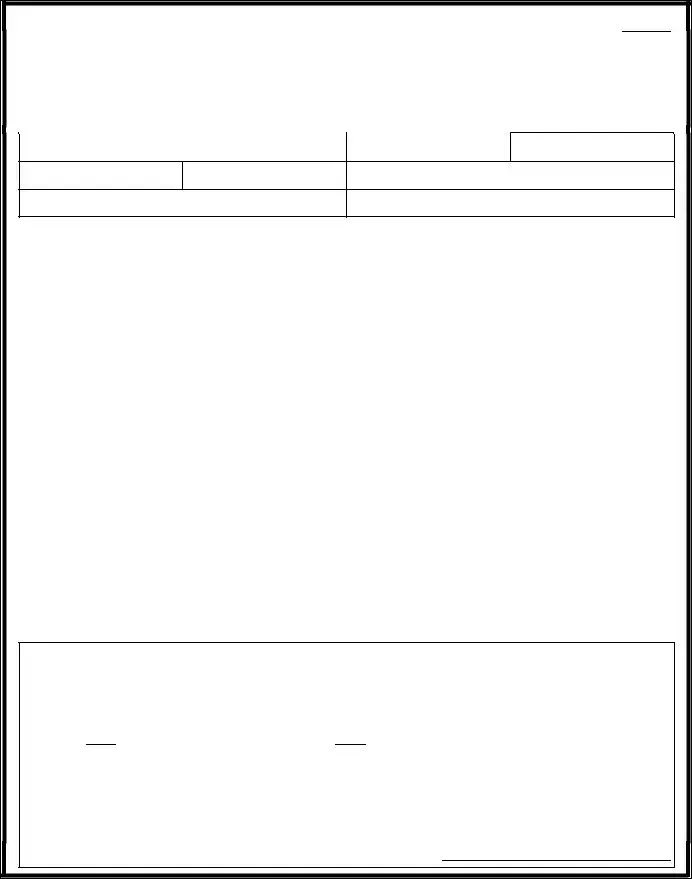A construction proposal form is a document that outlines the terms and conditions of a construction project. It serves as a formal offer from a contractor to a client, detailing the scope of work, estimated costs, timelines, and other essential elements. This form is crucial for establishing clear expectations between both parties before the project begins.
This form is important because it helps prevent misunderstandings and disputes. By clearly stating the project details, both the contractor and the client have a reference point for what was agreed upon. It also provides a basis for legal protection should any issues arise during the project.
A construction proposal form usually includes:
-
Contact information for both the contractor and the client
-
A detailed description of the work to be performed
-
Estimated costs, including labor, materials, and any additional expenses
-
Project timeline and milestones
-
Payment terms and conditions
-
Any necessary permits or regulatory requirements
-
Terms for changes or additional work
Filling out a construction proposal form involves several steps:
-
Gather all relevant information about the project, including client needs and site conditions.
-
Clearly define the scope of work and any specific requirements.
-
Estimate costs accurately, considering all potential expenses.
-
Outline the project timeline, including start and completion dates.
-
Review the proposal for clarity and completeness before submission.
Both contractors and clients should use a construction proposal form. Contractors use it to present their offer and terms, while clients use it to understand the scope and costs involved. This mutual use fosters transparency and helps ensure that both parties are on the same page.
Yes, a construction proposal form can be modified after submission, but both parties must agree to any changes. It is essential to document any amendments in writing to maintain clarity and avoid potential disputes. This documentation can take the form of an addendum or a revised proposal.
What happens if the project scope changes after the proposal is accepted?
If the project scope changes after the proposal is accepted, the contractor should provide a revised proposal outlining the new work and associated costs. The client must review and approve this change before any additional work begins. Clear communication is vital to ensure that both parties agree on the new terms.
A construction proposal form can become legally binding once both parties sign it, indicating their agreement to the terms outlined. However, to be enforceable, the proposal must meet certain legal requirements, including clarity in the terms and mutual consent. It is advisable to consult with a legal expert to ensure that the proposal complies with applicable laws.
You can obtain a construction proposal form from various sources, including:
-
Online legal template websites
-
Construction industry associations
-
Local contractors or construction firms
-
Legal professionals who specialize in construction law
Make sure to select a form that suits your specific project needs and complies with local regulations.

